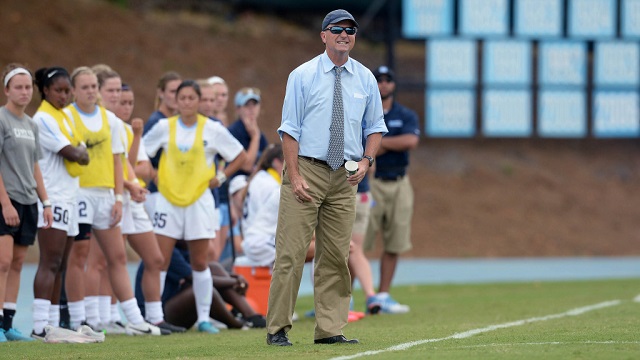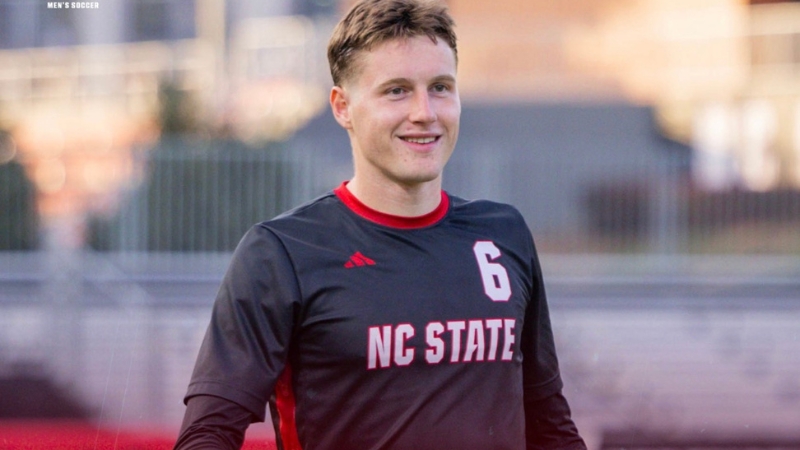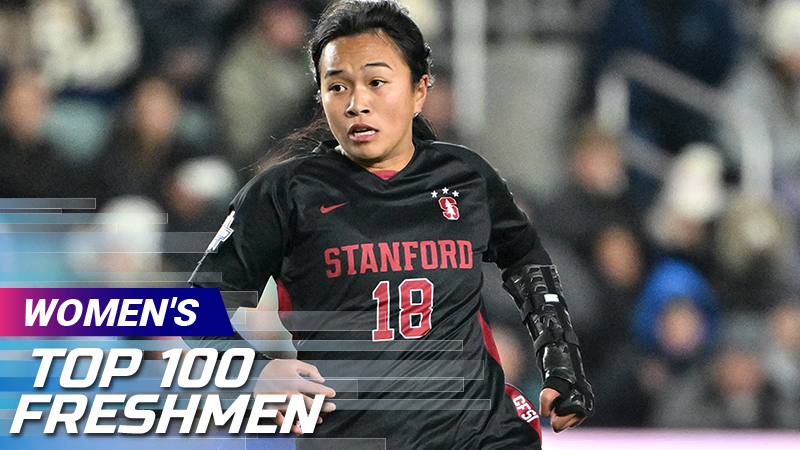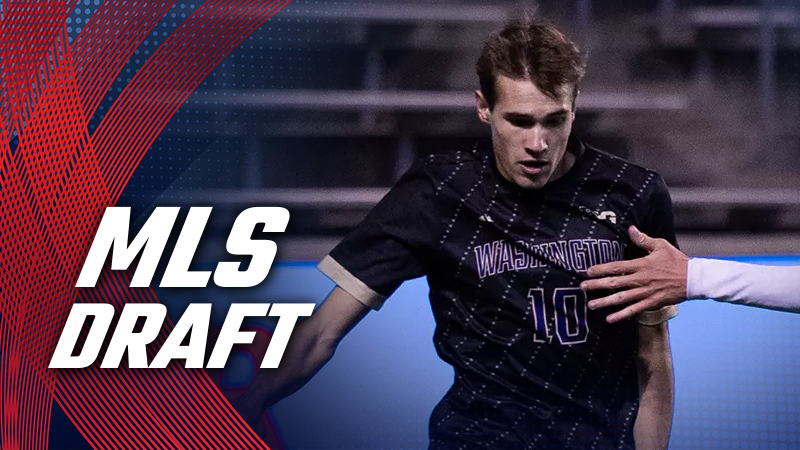Ask a Coach: UNC's Anson Dorrance

Anson Dorrance needs no introduction.
The North Carolina women’s coach has won more than any Division I coach alive. He’s presided over the entire band of progress in the women’s college game as an NCAA sport, winning a staggering 21 national championships and coaching some of the game’s scions along the way. So, needless to say, Dorrance’s lens on the American soccer game’s improvement, or lack thereof, over the past few decades is about as wide as exists today.
TDS Ask a Coach: Dartmouth's Chad Riley charts fresh DI course | Become TDS premier
To that end, we sat down with Dorrance for our next installment in our Ask a Coach series plumbing the depths of some of the most pressing questions pervading the game today. From top recruits to the coming U.S. Soccer-led Girls Development Academy, we go deep with the game’s most accomplished American legend.
What would you say is the biggest change in top recruits that you’ve seen maybe in the last 10-15 years, either mentally or physically?
“I think the pool is getting bigger. Right now coming into college there are a heck of a lot of good players coming in, a lot more than there used to be. I think that’s the first change. In the old days, if you were a very good soccer player you would probably be on one of the top 20 teams in the country. Now there are very good soccer players on teams all the way down to 150. All of us are getting good players now.
“So I think the biggest difference is the number of quality players that are available for coaches to recruit. The American youth coaches are doing a much better job. Best practices are being shared better. People in the clinic business are doing a better and better job because there are very few coaches at the youth level now that aren’t competent. I remember going up to the ECNL event (the ECNL National Playoffs) in Illinois a couple weeks ago, and I was stunned at the level of teams at the event. I think the ECNL leadership has done a fantastic job in helping us elevate the youth game on the girls side in the United States.
“But I’m afraid; I’m afraid of (U.S. Soccer’s) Girls Development Academy (to open this fall) changing the paradigm. I think one thing they might be missing is the substitution principle in American sport.
“I gave a presentation at (Dutch coach) Raymond Verheijan’s expert meeting at Benfica a couple weeks ago, and the birth month anomaly that the rest of the world suffers from, where the best players on the national teams on the men’s side all over the world are born in January, February, March or April. I had someone on my staff research the birth month anomaly on the women’s side for our Olympic team and reigning world championship team. And I was stunned to find so many girls born in the latter months, and I attribute it to the fact that in the American culture, because it’s so expensive to travel across the country to play a quality opponent, when you travel in this country, you play more than one game and you allow your coaches to substitute.
“As a result, I was shocked at the number of girls in the U.S. roster that was born in literally the last month. The last month in the old cycle for the U.S. – it was an August to July cycle (mimicking the school year, not birth year) – I was stunned at the number that were born in July. And I attribute that to the American substitution pattern.
“So what we’ve got in this country with our substitution rules is we have a deeper player pool and the birth year anomaly doesn’t apply as much to us. So I really like what’s happened with the ECNL and what it’s done for player development. And I’m a bit concerned if we change that model radically, I just hope our leadership on the Development Academy side makes good decisions and follows best practices the way the ECNL did.”
There have been some concerned that unlike on the boys side, the Girls DA is entering a crowded market with the ECNL that’ll have uncertain consequences. What’s your feeling about the necessity of U.S. Soccer’s new development league?
“I was a public opponent to the Girls DA’s introduction without sitting down and figuring out a way to blend in with the ECNL. I was a very aggressive opponent, because obviously U.S. Soccer is in a fabulous position to just blow anyone out of the water just with the checking of a box by starting the Girls Development Academy. So I was very disappointed in our girls technical director for the decision to just decide not to really embrace the ECNL and see if there was a way the two player development platforms could blend together and produce what I thought would be a fabulous hybrid.
“So I wasn’t pleased with that. Now having said that, I think there are a lot of very good things the Development Academy could do, but I think there are some aspects of the ECNL that are superior. And one of the things I think are is the substitution patterns (the Girls DA features more limited substitutions) that solve the birth month anomaly that the rest of the countries in the world suffer from.
“The way to look at it is this. If you look at typical rosters on men’s national teams, a lot of the roster is born in the first four months. It’s almost like saying, OK, I can take the player population in Germany, and rather than have the let’s say 100,000 registered players in Germany, I’ll narrow that number down to 33,000. Because almost the entire national team in Germany is born in the first third of the year.
“So the thing I like about what’s happening now in the United States on the girls side, and I think the substitution pattern has something to do with it, is we’ve mitigated the damage that the birth month anomaly does in our player development structure. A smaller player in other environments who would be pushed off the field playing FIFA rules where you play a kid for 90 minutes, a lot the kids playing 90 minutes are bigger, stronger kids more often than the smaller, weaker kids. If that had happened in the case of a player like Lionel Messi, who’s small and obviously had a growth hormone problem back in the day, he wouldn’t be Lionel Messi.
“I’m really concerned about the direction we’re going in, when I thought our structure was very good. Not that I don’t think the DA can’t improve it. Of course it can improve it. But I really think some of the aspects of what the ECNL did was fabulous and I’m really concerned some of the great things they did are going to be ignored.”
Going back to the player pool, if you could address American club coaches about the players who get to you at North Carolina, what would you tell them about where those players need to be generally better?
“Obviously we can all sing the same mantra about closing down the gap between us and the Japanese technically, and even between us and the North Koreans technically. The Japanese are just doing a fantastic job, and I think part of what can help us is bringing in people like Tom Byer, a former Coerver coach who settled in Japan, married a Japanese woman and then helped them transform their soccer culture into a culture that is just extraordinary on the technical side.
“He’s also got some great ideas on how our culture can catch the Japanese if we’re willing to invest in what’s called the U6s. Going to Zone 1, it’s Under-12, but even going down to the U6 level and teaching our girls not to kick the ball but the teach them to manipulate it.
“So who are our coaches at the U6 level across the United States? The parents are. The really neat thing about what we have in this country, which is extraordinarily unique, is the education of the parents whose kids end up playing soccer. All we need to do really is educate them on what they need to do with their kids. Send them Tom Byer videos of a parent just shielding the ball against his or her 3 or 4-year-old by pulling it back and not teaching them to kick the ball around the house, because obviously they’ll break things, but teach them to manipulate the ball around the house.
“And there are so many things technically we can do to close the gap between where we are and the Japanese are. Now Byer is working for China, and God forbid the Chinese buy into his ideas because we’ll never catch them because their population is so extraordinary and we’d be completely destroyed. So there are a lot of things on the technical side we can do to make things better. And the advantage we have is that almost every American family whose kid plays soccer on the girls side owns a computer. There’s a way we can really send out best practices on a U6 level on what parents can do to take their kids to their potential before they even join a team.
“That’s the first thing. As they get a bit older, I still think we should develop what’s called the universalist. I don’t have complete buy-in with the fact that we’re going to follow a European best practices idea for players to play one position. I don’t think that’s a good idea. I pity the player who would have to play behind a Michelle Akers. She played at an elite level into her mid-30’s, so if you want to end up starting on the national team and play behind a Michelle Akers, you’re never going to get on the freaking field unless you have the versatility to move.
“I’m more into developing kids to be universalists, and I’m afraid of specialization. That’s a concern I have. I think, again another direction I’m afraid the DA is going to go in is to make our players specialists. So whenever a kid tells me they’re interested in North Carolina, I want her to be able to do everything: beat players off the dribble, defend players off the dribble, obviously win head balls, and I like them to be able to play multiple positions.
“And then obviously for a program like mine that believes in pressing for 90 minutes, I love this kid that has an incredible technical ability that can play multiple positions. I want her to take huge pride in her defending, because for us that’s the fastest way to get on the field if you come to the University of North Carolina. Obviously be the best player you can be technically and tactically, but also have the willingness to commit yourself to defending, because defending is not a talent. It’s a decision you get to make if you want to be a complete player.”
How do you feel in general about the level of the women’s college game right now? Obviously there seems to be as much parity at the moment as there’s ever been.
“I think it’s outstanding. In the old days there were some games we’d go into where we’d feel very confident that we were going to win. There aren’t as many games like that anymore. Even though last year our team finished in the top three in the country, winning any game in the ACC is a freaking nightmare, and then trying to walk your way through the NCAA tournament to get to the final four was a nightmare as well.
“And I’m not just talking about a semifinal against a very good South Carolina team, but I’m talking about first round games. There are so many good teams out there with fine players and excellent coaches that navigating your schedule – and certainly the schedule we have to play in the ACC – is an absolute nightmare.
“If we fly out across the country and play a UCLA and USC back to back, that’s suicide. The amount of energy it took us to beat UCLA last year, we came into the USC game absolutely depleted, and even though they only beat us 3-0, it could’ve been 6-0. Now you can’t travel across the country and play two elite teams and survive. If you have a good game on Friday and your opponent is trying to rest through their game on Friday, you’re going to be destroyed by any pairing out west.
“If you look at our struggles (on the national team level) on the U20 and U17 level like we’re seeing right now, the band I’m very proud of where the United States catches up to the rest of the world is in the college band. Right now the best environment for an 18-22 year old to play in the world is in an American elite college. As a result, all these top players all over the world are coming to the United States, because even their coaches can see that this is an area where they’re not quite good enough to get on the field for Manchester City in the top professional league on the women’s side in England, or Chelsea or Arsenal and these other top teams.
“So rather than having these girls sign professional contracts where they’re shipped off to Brighton and some of the lower level English teams, the best thing for them for their player development is to come to an American college. And I would say the same thing of the teams and players in Sweden, in Finland, in Denmark, in Norway, in Germany, if they have the academic platform to come.
“The American college band is the best girls development band in that age group in the world. And the proof I would offer for this isn’t just the success of the U.S. team and how easily a college player acclimatizes herself to the American pro league or the U.S. full national team. Because it’s fantastic how easily American players go from college to starting on pro teams to playing for the senior U.S. team. But look at the amazing success of the Canadians.
“The Canadians basically have a tiny player population. They are asked to coach and develop their kids in a frozen wasteland, so it’s not like they have this fabulous nirvana to develop their players in. But here’s one thing the Canadians do; they send their elite players to the American colleges. And because of that, no matter where these Canadian teams end up at a U17 or a U20 level, they catch up with the rest of the world the same way the United States players do after not winning at a U17 level and most recently at a U20 level. They catch up in college.
“And look at the success at the Canadian national team and Olympic team and the U.S. national team and Olympic team and the past – go back as many years as you like. And what do the Canadians and the Americans have in common? They have in common the college band. Both countries send all of their elite players to the top Division I schools in the United States. So I would venture to say that that band between the ages of 18-22, the best player’s development band in that age group in the world is the elite levels of college soccer in the United States.”
Headlines
- Recruiting Roundup: December 15-21
- How Do I Get Scouted by TopDrawerSoccer?
- 2026 Women's Division I Transfer Tracker
- Niko Markovic Selected First in MLS Draft
- 2026 Major League Soccer Draft Results
- Women's College Postseason Freshmen Top 100
- TDS Boys Regional Rankings: Class of 2027
- 2026 Major League Soccer Mock Draft
- Women's College Postseason Top 100 Players
-
Top MLS Academy Alumni Performances




